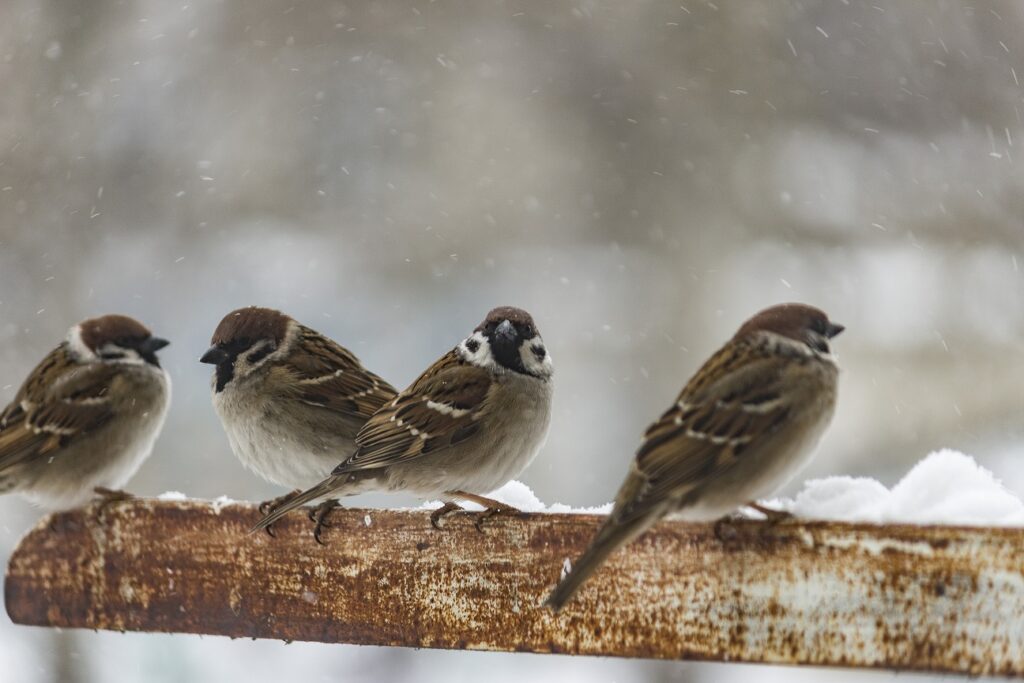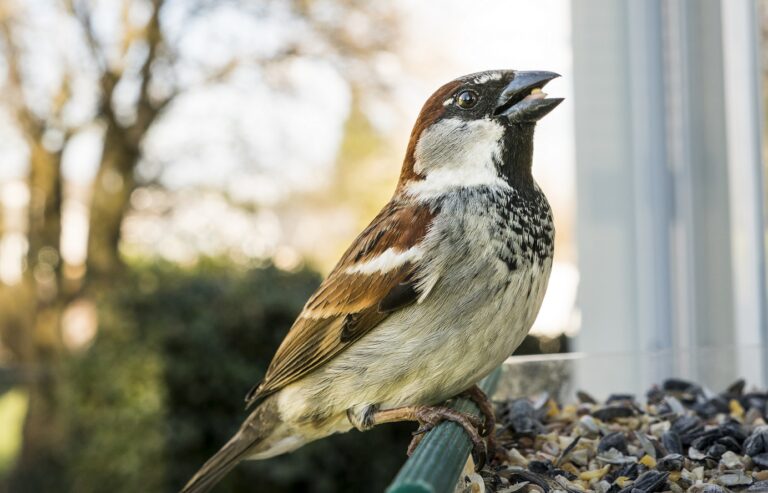 What Happens To House Sparrows In Winter?
What Happens To House Sparrows In Winter?
There are many different species of sparrows in the US, but the house sparrow is the most widespread. These little brown birds are also most often found to be in conflict with humans. They happily live in towns and cities as they are very adaptable and skilled at taking advantage of the opportunities we provide to them.
Keep reading to learn more about the habits of house sparrows in the winter and the conseqences of their cohabitation with humans.
How Do Sparrows Survive The Winter?
During the cold months, house sparrows find their way into all sorts of man-made habitats. We create perfect habitat for them and they thrive on the shelter and food we supply.
The house sparrow stays all winter in the US. These birds may occupy their old nesting sites from previous years, establish new ones, or take over their chosen sites before the arrival of migrating birds in spring, and even usurp nests that the migrating birds have built.
In winter, house sparrows feed on a huge range of foods, from various types of seeds and grains, to discarded food scraps and agricultural crops.
Do House Sparrows Nest In Winter?
House sparrows will most likely build their nests between February and May, and use them throughout the year. In spring and summer, the nest is used to raise young, while in fall and winter, it serves as a place to rest and sleep.
Typically, the nesting season starts in April and lasts until August, but nesting may continue in other months, too.
Where Do Sparrows Nest In Winter?
House sparrows like to make their homes in, on, or near buildings. They prefer to nest in cavities, hollows, dryer and other vents, attic vent louvers, and crevices such as around window-mounted AC units.
Also, awnings, street signs, eaves of the roof, or underneath tiles are their favorite nesting locations.
Wherever they find some space to squeeze in and can make the most of the shelter, house sparrows will move in. They can also take over other birds nests.

What Problems Do House Sparrows Cause?
Despite their small size, house sparrows are very aggressive. They can cause many problems for native birds as they will attack, harass, and kill them when competing for nesting sites. Sparrows can also destroy their eggs and hatchlings, and take over their food sources from bird feeders.
While on your property, it is only the manner in which these birds accommodate themselves in your home that can cause a problem for you.
Like all birds, sparrows have the ability to cause significant damage to your house, both outside and inside. They seek shelter in enclosed or protected areas and like to build nests that are large and act as a link for their colony and activities.
Their habit of stuffing nesting material in dryer, stove, and fan vents may cause the vents not function properly and prevent further use of the vents, which is a more serious problem.
In addition, sparrows nesting in your house structure could result in the following:
– Damage to roof tiles. Nesting sparrows can dislodge the tiles.
– Bird droppings. Their feces can carry harmful diseases.
– Filthy, unhygienic waste and foul odor. Their old nests may contain rotten eggs and decaying chicks that failed to survive.
– Insects and pests. The material they use to build nests can contain insects and other small pests that can then find their way into your attic and home, causing more problems for you.
How Can You Keep Sparrows Away From Your House?
Therefore, getting rid of house sparrows and their nests from places you don’t want and preventing these birds from building new nests in your house, is the first and best approach.
For this, it’s good to install covers over vents to keep sparrows and other birds out, and check screening over louvers before the birds make their way in. Exclusion methods are particularly useful, such as nets, sheet metal, or hardware cloth in order to block any openings that could serve as potential nesting areas. You may use various deterrents or tactile gels that help prevent roosting and perching.
Always remember to remove the nesting material and make sure that there are no chicks present in the nest before excluding the birds.
If you notice sparrows, or any other nuisance birds nesting or flying on your property, it’s best to have them eliminated immediately.
If your home is located in one of our service areas of Westchester, Dutchess, and Putnam Counties, NY, or Fairfield County, CT, reach out to us for help with our bird removal services. Westchester Wildlife is a top-rated bird removal company in your local area.
Call us today to schedule a bird removal inspection and get a quote with a member of our expert wildlife control team.
